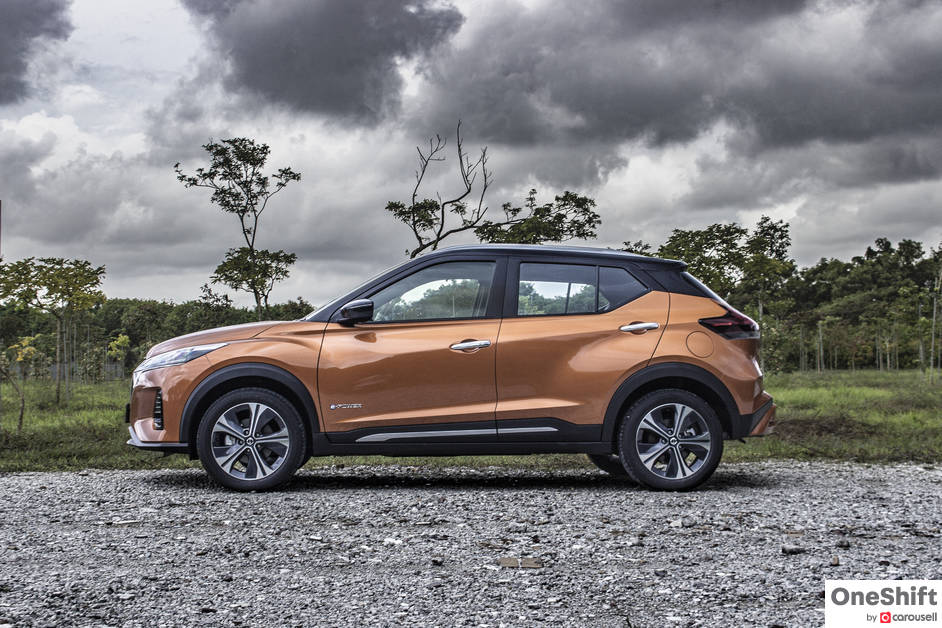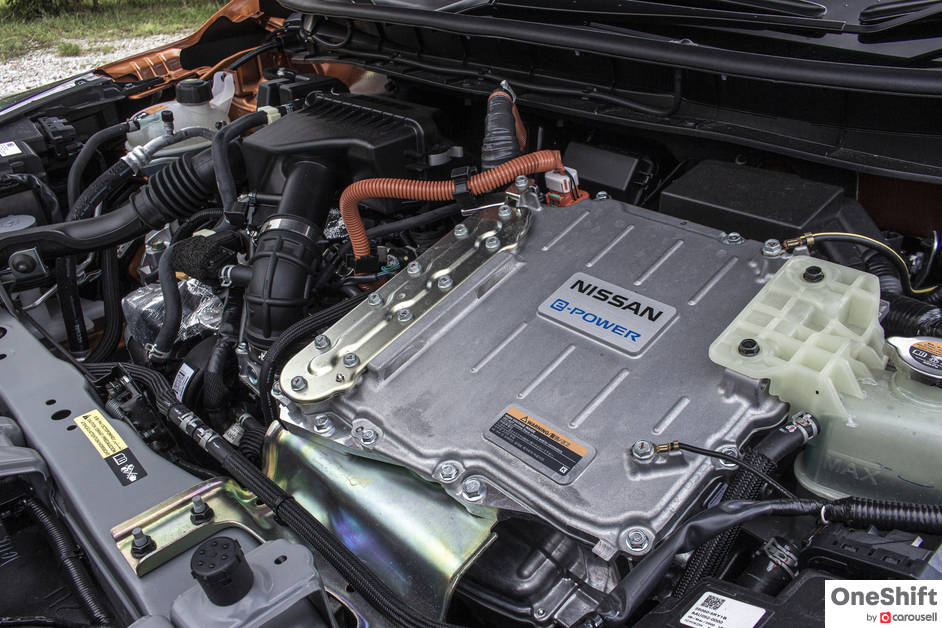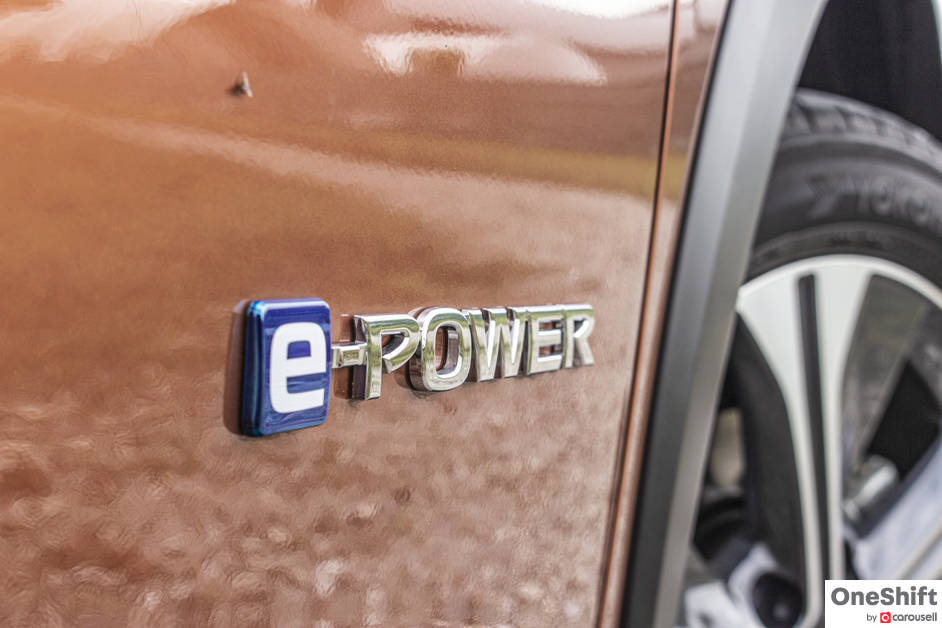Urban Kicks
With the gradual shift to electrification, Nissan’s approach might seem a little strange to some. The Kicks is the second car offered here by the Japanese automotive which features their E-Power Serial Hybrid drivetrain; the first being the Serena MPV. Nissan, we would like to think, got their product planning right, with pairing an SUV with their drive technology, since SUVs have become all the rave; and with its starting price of this one at around $107k, the average car buyer would find this quite attainable.


With the gradual shift to electrification, Nissan’s approach might seem a little strange to some. The Kicks is the second car offered here by the Japanese automotive which features their E-Power Series Hybrid drivetrain; the first being the Serena MPV.

Nissan, we would like to think, got their product planning right, with pairing an SUV with their drive technology, since SUVs have become all the rave; and with its starting price of this one at around $107k*, the average car buyer would find this quite attainable.
The Nissan Kicks is quite a charming compact SUV, filled with a youthful flair. The 2-tone paint treatment, a popular element in a number of modern-day SUVs has made it here, which visually lowers the car. Its imposing grille which features Nissan’s V-Motion design dominates the front end.

Nissan has however toned down on their Boomerang lamp signature frontal styling, while at the rear, the Kicks does clearly display Nissan’s design language, with its signature Boomerang tail lamps.
Our test car, which is in Premium Plus trim, features 3D seat quilting in quality Nappa leather. You can go with the option of easy-on-the-eyes all black, or opt for an exuberant orange-and-black combo, as seen in the pictures. While the 3D seat upholstery is pleasantly done, the stitching on the dash could have been done slightly better.

With a simple dash layout, the 8” touchscreen, which fronts the NissanConnect infotainment system, takes centre stage. We like that the interface has physical menu buttons, making it easy to operate. Sadly, the infotainment system is only compatible with Apple CarPlay.
Behind the wheel, you will be greeted with a half-and-half digital and analogue instrument panel, similar to the on the LEAF EV, which displays the flow of energy back and forth from the wheels to the battery, and from the battery to the motor, while you drive.

The steering wheel with its scatter of buttons on the left and right spokes, ensures that most entertainment and drive info toggles are right at your fingertips.
The Kicks accommodates four-and-a-half adults with ease, and the seats are comfortable. While rear passengers do not get their own air vents, the air-conditioning is surprisingly powerful in this car. They do however have access to two rear-facing USB ports, sited at the rear of the centre console.

Cargo space at 423 litres, is among the more generous of its class size. Loading and unloading however, can be an issue for some, since there is quite a bit of a lip. Due to the placement of the battery, the rear seats also do not fold flat.

For Singapore, the Kicks is only available with one option for propulsion, which is its e-Power drivetrain, supplemented by a 1.2 litre three cylinder petrol engine to charge the car’s relatively small lithium-ion battery. This is not a range extender, but rather an engine intended to keep juicing up that tiny battery.

I would say that the experience if you are new to the Kicks or even the Serena, can get a little surreal at times. Since the car does drive like an EV, meaning that you get immediate (silent) acceleration with your foot down. The surreal part of the experience is when the engine begins to respond under heavier throttle loads, where it reciprocates with the build-up of revs, as it works to juice-up the car’s tiny 1.48kWh battery. Flat out, the Kicks… kicks itself to the benchmark 100km/h with a sliver under 10 seconds.

There is a “polite” EV only mode switch right beside the start button (such a Japanese thing), so that you would not disturb the neighbours when pulling into your neighbourhood in the wee hours of the morning (which uses all of its battery juice to get the car through the neighbourhood and into your lot).

After a little twiddling of the different drive modes - Smart, ECO and Normal, you will come to realise that the best-suited for day-to-day usage is the last one, which also has the least amount of regenerative braking when you lift off the accelerator pedal. This would mean that you will get more kick out of your Kicks, when cruising to a stop. Those who find themselves in slower city traffic, might adapt well to the car’s ‘Smart’ drive mode, which makes one-pedal operation available, where in most cases, the going on and off the accelerator pedal is all you need. Driven not like it is stolen, the Nissan claims that the Kicks can return a combined 21.7km/l, we managed around 18.2km/l.

As an SUV with a moderately taller-than-average ride height, and with a suspension tuned with a lean to comfort, the Kicks does roll just slightly around the bends. With its MacPherson Strut front end, and simple Torsion Beam setup at the rear, it does tend to get a little unsettled over uneven surfaces. Overall, handling within acceptable (Singapore) speeds is decently good, and predictable.
While insulation is good for a car in its class, those 17” rims however, contribute to some intrusive road noise, and do add a few jolts to the otherwise pleasant ride quality.

Starting from just under $107,000*, the Nissan Kicks is priced similar to most class-equivalent compact SUVs; meaning that it is a viable option for those who are keen to take their first step in making a switch to an EV. Novelty aside, you will benefit from some good fuel consumption figures.

*Accurate on 31 August 2020
Credits: Words and Photos by Clifford Chow







- Convenient and Hassle-Free
- Consumer Protection
Transparent Process
With No Obligation


Get the Best Price for your used car
from 500+ dealers in 24 hours








